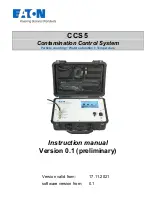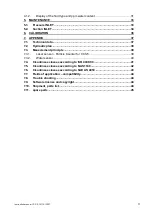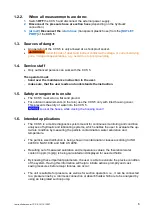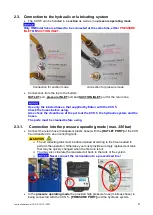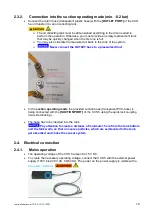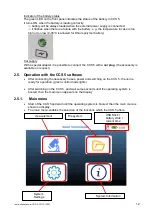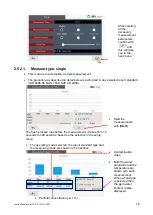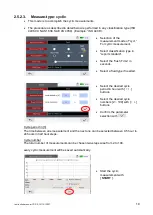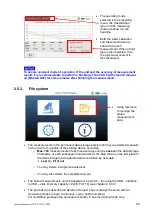
Instruction manual CCS 5, 15/ 10/ 2021
8
2.
Operation and installation
2.1. Setup
The CCS 5 consists of the equipment case (1), the external power supply (2), the USB
–
stick (3), high pressure measuring hose (minimess hose) (4), the suction hose and the return
hose (5).
2.2. General information
External factors have a huge and extensive influence on the lubricant during operation.
External factors are for example forces, energies, and interactions with other materials.
Pressure and shear stress also belong to the force effects. Energy influences are the supply
and the removal of heat (high temperature amplitudes). A lubricant gets in contact with gases
(air, nitrous gases or sulphur dioxid), liquids (water, external liquids like detergents, dissolver
etc.) and solid matters (metals, ceramics, synthetic material parts and sealing materials).
The contamination outcomes are very versatile for the hydraulic and lubricating system and
cause a significantly higher abrasion, an increase of the failure risk of components as well as
malfunctions.
The CCS 5 is for the continuous monitoring and condition analyses of hydraulic and
lubricating systems. The CCS 5 can be handled in suction as well as in pressure operating
mode.
The CCS 5 includes the following functions:
•
Particle counting by a laser sensor for hydraulic and lubrication oils within the measuring
range < 24000 particle/ 1 ml and the maximum particle size of < 200 µm.
•
Exact evaluation of contamination classes according to ISO 4406:99, NAS 1638 and SAE
AS 4059.
•
Measuring of.
-
Water saturation
(0 … 100%)
-
Temperature
(0 … 70 °C)
(see also the technical data at chapter 7.1 )
•
Calculation and output of the theoretical water content in ppm (mg/kg) based on fluid
specific saturation curves.
•
Display of all measurement values on a resistive touchscreen.
•
Internal storage of measurements.
•
Output of saved measurement files by USB-interface on the USB-stick.
For the data management using an external computer and the LabVIEW Data Manager
Software (export in MS EXCEL).
(1)
(2)
(4)
(5)
(5)
(3)
(4)
(5)

